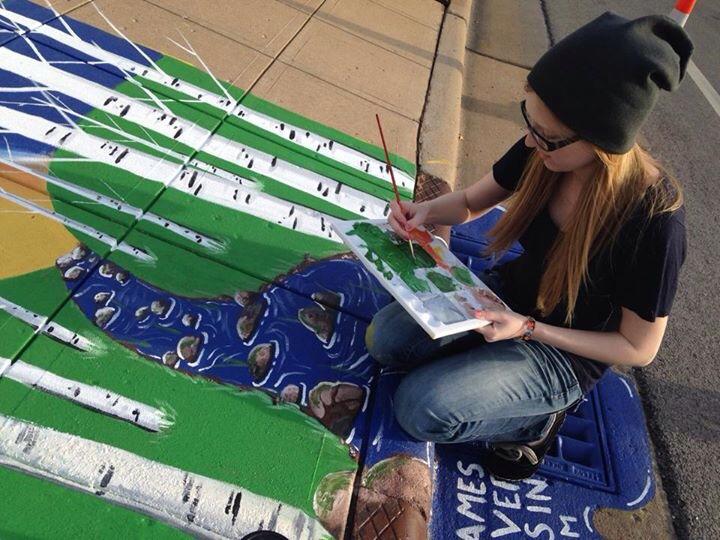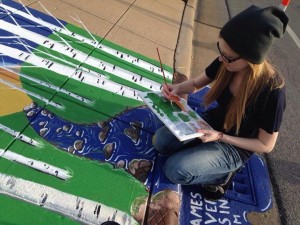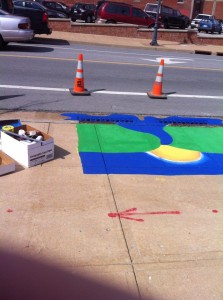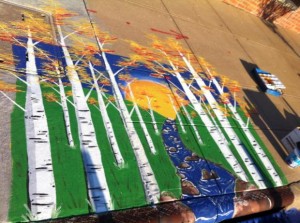
Hosted by the James River Basin Partnership, the Storm Drain Reveal is a project to raise awareness of storm drains — and where they lead — through art.
Every year, 10 local artists are selected to paint a mural on a storm drain. “The designs are meant to convey that what goes down the storm drains ends up within the James River Basin,” said Taylor Bolls, one of the artists selected.
Bolls, 20, studies design and illustration at Ozark Technical Community College and was drawn to the project both as an artist and an advocate of conservation.

The James River Basin

A basin is another term for a watershed, which is a common waterway where all underground and surface water pool. The city of Springfield has several small watersheds that eventually drain into either the Sac River or James River. The rivers themselves drain into another larger watershed that takes them out into the ocean.
The James River watershed, which spans 1,512 square miles, suffers from both point-source and nonpoint-source pollution. Point-source pollution has an identifiable source causing the pollution, such factories and sewage treatment plants.
According to the federal Environmental Protection Agency, nonpoint-source pollution “generally results from land runoff, precipitation, atmospheric deposition, drainage, seepage or hydrologic modification.” Around Springfield, some of the most likely causes for such pollution are cattle and chicken operations, erosion, septic tanks, and urban runoff.
Stormwater
Stormwater is excess water that comes from snow and rain. In rural areas, it gets soaked up by the soil, but in urban areas, storm drains are required to direct the water back into the natural environment.
Storm drain water is not treated before going into rivers, which can lead to negative environmental impacts.
All the trash that gets sent down there ultimately gets mixed into the water that we drink or use for recreation. It negatively impacts wildlife who get trapped in trash or ingest trash, thinking it’s food.
—Taylor Bolls, artist

The Storm Drain Reveal
By having murals on the storm drains, organizers of the Storm Drain Reveal hope people will become aware of how problems with drain water eventually reaches the water we drink and use for recreation.
“It’s an interesting experience working in the eyes of the public,” Bolls said, “I’ve gotten to meet and talk to so many people, some who have become inspired to help the environment, and others who are inspired to make art of their own.”
The murals are in downtown Springfield. Bolls’ mural can be found on Boonville Street, just past the intersection with Olive Street.
The official reception for project will be Friday, May 2, during First Friday Art Walk. That same weekend, it will also be featured during Artfest on Historic Walnut Street.
Does everything that goes down the drains turn up in the Basin later? How long does it take for it to reappear? I’m just idly curious.